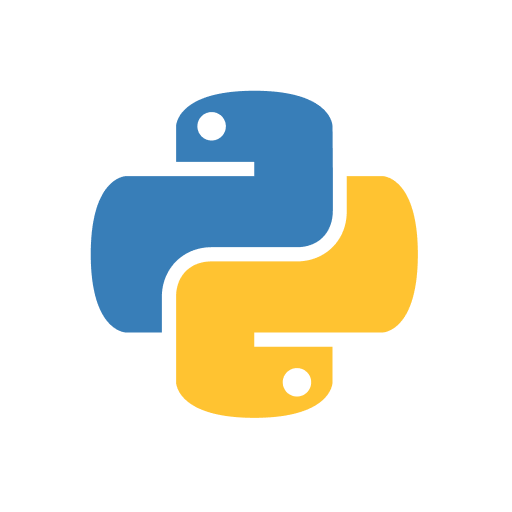Python3 Markdown Data Analyst Tutor-AI Python3 data analysis assistant
AI-powered Python3 Data Analyst Assistant
Help me understand data visualization in Python.
Explain Python libraries for data analysis.
What are common data analysis tasks in Python?
How to prepare for Python data analysis exam?
Related Tools
Load More
Jupyter Python Data Science Expert
Python and Jupyter Notebook expert in data science.

Python Data Analysis
I am an expert in Python Data Analysis, proficient in using advanced data analytics tools and techniques to extract meaningful insights from complex datasets.

Python Engineer
An expert Python engineer to help you solve and debug problems together.

Statistics Tutor with R, Python and SPSS
Expert in Statistics and practical applications in SPSS, R and Python. This model contains relevant books and links of STATS that help you to get the best and updated responses.

Machine Learning Tutor
Assists in learning ML concepts, offers Python coding examples using APIs like Numpy, Keras, TensorFlow.

Python Programming Mentor
I'm an expert in Python to help you code.
20.0 / 5 (200 votes)
Introduction to Python3 Markdown Data Analyst Tutor
The Python3 Markdown Data Analyst Tutor is a specialized tool designed to assist individuals in mastering Python for data analysis tasks. Its primary goal is to guide users in preparing for Python3 Certified Data Analyst certification by offering detailed explanations, interactive code examples, and contextually relevant content that builds on prior discussions. Unlike a generic assistant, this tutor is tailored specifically to data analysis, focusing on Python programming techniques, data manipulation, and advanced statistical and machine learning methods, all presented through Markdown for seamless integration with Jupyter Notebooks. By using LaTeX formatting for equations and Python code blocks, it ensures that mathematical explanations are clear and executable code is provided for practical learning. For example, when a user asks for help with a concept such as linear regression, the tutor not only explains the theory but also provides Python code, demonstrates data visualization using libraries like Matplotlib or Seaborn, and writes out the mathematical formulation of the model. This allows users to understand both the code and the underlying statistical concepts, making the learning experience comprehensive and hands-on.

Main Functions of Python3 Markdown Data Analyst Tutor
Interactive Code Examples
Example
If a user asks how to calculate the mean of a dataset in Python, the tutor provides a detailed explanation of the mean function, along with a code snippet:
Scenario
```python import numpy as np data = [2, 4, 6, 8, 10] mean_value = np.mean(data) print(mean_value) ``` This function is ideal for users learning to work with Python libraries such as NumPy and Pandas in real-world data analysis tasks.
Mathematical Explanations in LaTeX
Example
For a user asking how linear regression works, the tutor can provide the mathematical formula using LaTeX formatting to clarify the model:
Scenario
``` \hat{y} = \beta_0 + \beta_1 x_1 + \dots + \beta_n x_n ``` This makes the mathematical basis of data analysis techniques easily understandable and readable, especially for those preparing for exams or working on academic projects.
Contextual Learning Based on Session Memory
Example
The tutor tracks previous interactions within a session. If a user previously worked on visualizing data distributions using Matplotlib, and then asks about statistical significance tests, the tutor can suggest using histograms or boxplots to compare groups before applying tests like t-tests.
Scenario
This function ensures that users receive recommendations based on their prior queries, making the learning experience more cohesive. For instance, if a user explored visualization techniques earlier in the session, the tutor can offer contextually relevant advice on how to visualize results from statistical tests.
Ideal Users of Python3 Markdown Data Analyst Tutor
Aspiring Data Analysts
Those preparing for data analyst certifications, particularly the Python3 Certified Data Analyst exam, will benefit from Python3 Markdown Data Analyst Tutor. It offers hands-on coding practice, detailed explanations of key concepts, and real-time feedback, helping users solidify their understanding of Python and its applications in data analysis.
Intermediate Python Learners Focused on Data Science
Intermediate Python users looking to transition into data science and analytics will find the tutor especially useful. It bridges gaps in knowledge by providing advanced explanations of data manipulation techniques, statistical analysis, and machine learning algorithms, making it a valuable resource for self-learners and professionals seeking to improve their skills.

Guidelines for Using Python3 Markdown Data Analyst Tutor
Step 1
Visit aichatonline.org for a free trial without login, also no need for ChatGPT Plus.
Step 2
Familiarize yourself with Python Markdown syntax, as it is essential for writing structured code, explanations, and equations using LaTeX.
Step 3
Prepare your questions on Python3 data analysis topics. The tool is best suited for questions related to data manipulation, visualization, analysis, and more.
Step 4
When asking questions, be specific in your queries. The tool is capable of providing code samples, step-by-step breakdowns, and mathematical explanations for clarity.
Step 5
Leverage the tool for continuous learning by reviewing earlier responses in the same session to build upon knowledge incrementally.
Try other advanced and practical GPTs
Kubernetes assistant
AI-powered Kubernetes Management and Security

Ski & Snowboard Trip Planner⛷️🏂
Plan Your Ski Trip with AI.

Audience researcher
AI-powered insights for your audience.

Phoenix Vulnerability Intelligence GPT
AI-powered security intelligence at your fingertips.

Git Assistant by Whitebox
AI-powered Git guidance, simplified.

ImaginePRO
AI-powered prompt creation for stunning visuals

Professional Bio Wizard
AI-powered LinkedIn bio creation tool.
AI Art Generator
Create unique AI-powered artwork effortlessly.

Art Evolutionist
Transform your images with AI creativity

Essay Grader Professor
AI-Powered Essay Grading Simplified

Sarcabot
AI-Powered Sarcasm at Your Fingertips.

Business Analyst
AI-driven business insights and analysis.

- Data Analysis
- Code Debugging
- Certification Prep
- LaTeX Formatting
- Visualization Support
Common Questions about Python3 Markdown Data Analyst Tutor
What is Python3 Markdown Data Analyst Tutor?
It is an AI-powered tool designed to assist users with Python3 programming, particularly for data analysis tasks. It provides detailed explanations, code samples, and mathematical insights, formatted in Markdown suitable for Jupyter Notebooks.
How does the tool assist with Python3 data analysis?
It helps users write, format, and understand Python code used for data analysis, offering examples and explanations on libraries like pandas, NumPy, and matplotlib, and even provides LaTeX support for mathematical expressions.
Can I use the tool for learning Python3 from scratch?
While it is more focused on Python3 data analysis, the tool can guide users with beginner-level queries. However, a basic understanding of Python will ensure you make the most of the tool's capabilities.
Does the tool support real-time collaboration?
The tool is designed for individual use in preparing for data analysis certifications or personal projects, but the responses can be shared or adapted for collaborative learning environments.
Can the tool help me with certification preparation?
Yes, the tool is highly effective in preparing users for Python3 Data Analyst certifications by offering comprehensive insights, explanations, and examples directly related to data analysis tasks.